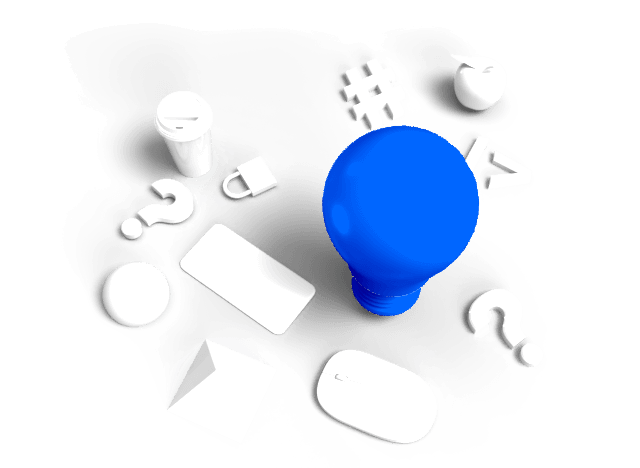Why OpenText
Why OpenText
Overview Why OpenText
OpenText brings decades of expertise to help you unlock data, connect people and processes, and fuel AI with trust
Manage and connect data
Unify data seamlessly across your enterprise to eliminate silos, improve collaboration, and reduce risks
AI-ready information
Get AI-ready and transform your data into structured, accessible, optimized information
Built-in security and compliance
Meet regulatory and compliance requirements and protect your information throughout its lifecycle
Empowering people
Overview Empowering people
OpenText helps people manage content, automate work, use AI, and collaborate to boost productivity
Customers
See how thousands of companies around the world are succeeding with innovative solutions from OpenText
Employees
Our people are our greatest asset; they are the life of the OpenText brand and values
Corporate Responsibility
Learn how we aspire to advance societal goals and accelerate positive change
Partners
Find a highly skilled OpenText partner with the right solution to enable digital transformation
How we compare
Content Management
Service Management
Deploy anywhere
Overview Deployment options
Explore scalable and flexible deployment options for global organizations of any size
Sovereign cloud
Local control. Global scale. Trusted AI
Private cloud
Your cloud, your control
On-premises
Free up resources, optimize performance and rapidly address issues
Public cloud
Run anywhere and scale globally in the public cloud of your choice
AI leadership
Overview Aviator AI
See information in new ways
OpenText™ Aviator AI
AI that understands your business, your data, and your goals
OpenText™ MyAviator
Say hello to faster decisions. Your secure personal AI assistant is ready to get to work
OpenText™ Business Network Aviator
Gain better insights with generative AI for supply chains
OpenText™ Content Aviator
Power work with AI content management and an intelligent AI content assistant
OpenText™ Cybersecurity Aviator
Improve your security posture with AI cybersecurity and agile threat detection
OpenText™ DevOps Aviator
Enable faster app delivery, development, and automated software testing
OpenText™ Experience Aviator
Elevate customer communications and experiences for customer success
OpenText™ Service Management Aviator
Empower users, service agents, and IT staff to find the answers they need
Aviator AI
Overview Aviator AI
See information in new ways
OpenText™ Aviator AI
AI that understands your business, your data, and your goals
OpenText™ MyAviator
Say hello to faster decisions. Your secure personal AI assistant is ready to get to work
OpenText™ Business Network Aviator
Gain better insights with generative AI for supply chains
OpenText™ Content Aviator
Power work with AI content management and an intelligent AI content assistant
OpenText™ Cybersecurity Aviator
Improve your security posture with AI cybersecurity and agile threat detection
OpenText™ DevOps Aviator
Enable faster app delivery, development, and automated software testing
OpenText™ Experience Aviator
Elevate customer communications and experiences for customer success
OpenText™ Service Management Aviator
Empower users, service agents, and IT staff to find the answers they need
Analytics
Overview Analytics
Predict, act, and win with real-time analytics on a smarter data platform
OpenText™ Aviator Search(AI)
Give users access to the answers they need, faster and easier, with multi-repository AI-based search that lets you contextualize everything from clicks to conversations
Business Network
Overview Business Network
Connect once, reach anything with a secure B2B integration platform
Content
Overview Content
Reimagine knowledge with AI-ready content management solutions
OpenText™ Content Aviator(AI)
Supercharge intelligent workspaces with AI to modernize work
Cybersecurity
Overview Cybersecurity
Integrated cybersecurity solutions for enterprise protection
OpenText Cybersecurity for SMBs & MSPs
Purpose built data protection and security solutions
OpenText™ Cybersecurity Aviator(AI)
Reinvent threat hunting to improve security posture with the power of agile AI
DevOps
Overview DevOps
Ship better software—faster—with AI-driven DevOps automation, testing, and quality
Experience
Overview Experience
Reimagine conversations with unforgettable customer experiences
Observability and Service Management
Overview Observability and Service Management
Get the clarity needed to cut the cost and complexity of IT operations
OpenText™ Service Management Aviator(AI)
Redefine Tier 1 business support functions with self-service capabilities from private generative AI
APIs
Overview APIs
Build custom applications using proven OpenText Information Management technology
OpenText™ API Services
Build it your way with OpenText Cloud APIs that create the real-time information flows that enable custom applications and workflows
Device and Data Protection
Overview Device and Data Protection
Protect what matters, recover when it counts
Unified Endpoint Management Tools
- OpenText™ Endpoint Management
- OpenText™ ZENworks Suite
- OpenText™ ZENworks Service Desk
- OpenText™ ZENworks Configuration Management
- OpenText™ ZENworks Endpoint Security Management
- OpenText™ ZENworks Full Disk Encryption
- OpenText™ ZENworks Endpoint Software Patch Management
- OpenText™ ZENworks Asset Management
Solutions
Trusted Data & AI
Overview Trusted Data & AI
Secure information management meets trusted AI
OpenText AI Data Platform
A unified data framework to elevate data and AI trust
OpenText Aviator Studio
A place where you can build, deploy, and iterate on agents in your data's language
OpenText Discovery
A set of tools to help ingest data and automate metadata tagging to fuel AI
OpenText Data Compliance
A suite of services and APIs that make governance proactive and persistent
OpenText Aviator AI Services
Professional services experts who help you on your AI journey
Information Reimagined
Overview Information Reimagined
Get greater visibility and sharper insights from AI-driven information management. Ready to see how?
Knowledge reimagined
Transform daily work with enterprise content management powered by AI
Service Management reimagined
Cut the cost and complexity of IT service management, AIOps, and observability
Connections reimagined
AI-powered B2B integration for supply chain success
Conversations reimagined
Drive value, growth, and loyalty with connected customer experiences
Engineering reimagined
Agile development and software delivery? It only seems impossible
Security reimagined
Cybersecurity for the Enterprise
Decisions reimagined
Unlock insights with AI data analytics
Artificial Intelligence
Overview Aviator AI
See information in new ways
OpenText™ Aviator AI
AI that understands your business, your data, and your goals
OpenText™ MyAviator
Say hello to faster decisions. Your secure personal AI assistant is ready to get to work
OpenText™ Business Network Aviator
Gain better insights with generative AI for supply chains
OpenText™ Content Aviator
Power work with AI content management and an intelligent AI content assistant
OpenText™ Cybersecurity Aviator
Improve your security posture with AI cybersecurity and agile threat detection
OpenText™ DevOps Aviator
Enable faster app delivery, development, and automated software testing
OpenText™ Experience Aviator
Elevate customer communications and experiences for customer success
OpenText™ Service Management Aviator
Empower users, service agents, and IT staff to find the answers they need
Industry
Overview Industry solutions
Improve efficiency, security, and customer satisfaction with OpenText
Energy and resources
Transform energy and resources operations with cloud, cybersecurity, and AI
Financial services
Boost customer experience, compliance, and efficiency with AI
Government
Reimagine your mission with government-secure information management
Healthcare and life sciences
Improve care delivery and patient engagement with AI-powered solutions
Legal
Modernize legal teams with automated, AI-powered legal tech solutions
Manufacturing
Modernize manufacturing operations and logistics to reduce costs and ensure compliance
Retail and consumer goods
Enhance consumer engagement with omnichannel retail solutions and AI
Enterprise Application
Overview Solutions for Enterprise Applications
Run processes faster and with less risk
Services
Services
Overview Services
Achieve digital transformation with guidance from certified experts
Professional Services
Modernize your information management with certified experts
Customer Success Services
Meet business goals with expert guidance, managed services, and more
Support Services
Turn support into your strategic advantage
Managed Services
Free up your internal teams with expert IT service management
Learning Services
Discover training options to help users of all skill levels effectively adopt and use OpenText products
Professional Services
Overview Professional Services
Modernize your information management with certified experts
Customer Success Services
Overview Customer Success Services
Meet business goals with expert guidance, managed services, and more
Support Services
Overview Support Services
Turn support into your strategic advantage
Managed Services
Overview Managed Services
Free up your internal teams with expert IT service management
Learning Services
Overview Learning Services
Discover training options to help users of all skill levels effectively adopt and use OpenText products
Partners
Find a Partner
Overview Find a partner
Find a highly skilled OpenText partner with the right solution to enable digital transformation
Cloud Partners
Overview Cloud Partners
OpenText partners with leading cloud infrastructure providers to offer the flexibility to run OpenText solutions anywhere
Enterprise Application Partners
Overview Enterprise Application Partners
OpenText partners with top enterprise app providers to unlock unstructured content for better business insights
Partner Solutions
Overview Partner Solutions
Discover flexible and innovative offerings designed to add value to OpenText solutions
Resources for Partners
Overview Resources for Partners
Discover the resources available to support and grow Partner capabilities
Support
Overview Customer Support
Get expert product and service support to accelerate issue resolution and keep business flows running efficiently
Resources
Overview Resources
Explore detailed services and consulting presentations, briefs, documentation and other resources
Choose your region:
Europe, Middle East and Africa
Asia–Pacific
What is Chaos Engineering?

Overview
Ask any project manager, developer, or team leader. Several things can go wrong during the software development life cycle, such as glitches, cyberattacks, and system outages. Unexpected failures are bound to happen, which can disrupt the entire process, limit results, and waste vital resources.
Chaos Engineering
Chaos engineering is a discipline that studies how these failures can occur and provides methodologies to help avoid them. By understanding the root cause of failures, chaos engineers can develop plans to prevent or mitigate them.
Chaos engineering is not about creating chaos; it's about using controlled experiments to identify potential points of failure in a system before they cause problems. By doing so, chaos engineers can proactively prevent outages and other disruptions.
What exactly is Chaos Engineering?
Chaos engineering is the practice of intentionally injecting faults into a system to test its resilience. The goal is to identify potential failure points and correct them before they cause an actual outage or other disruption.
There are many ways to create chaos in a system, but the most important thing is to have a plan. Without a plan, it's easy to create more problems than you solve. When creating your plan, you'll need to decide what you want to test and how you're going to do it. You can then start experimenting once you have a plan.
Software developers can easily introduce chaos engineering into their workflows with OpenText™ Professional Performance Engineering, OpenText™ Enterprise Performance Engineering, or OpenText™ Core Performance Engineering. Not only do these solutions leverage performance load testing, but they make it easy to run other chaos engineering experiments directly within the software.
By creating these events in a controlled non-production environment, you can test how your system reacts and identify any potential problems.
Once you've identified potential failure points, you can start working on mitigating them. This might involve adding monitoring or logging to help identify issues when they occur or changing your design to make it more resilient to failures.
What are Chaos Engineering principles?
The principles of chaos engineering are:
- Plan: Decide what you want to test and how you're going to do it. The goal here is to create a hypothesis. What could go wrong in a system? What are some potential vulnerabilities that can be exploited?
- Experiment: Inject faults into the system and see how it reacts. Fault injection is simply the process of introducing a problem into an existing system to expose a vulnerability. It’s essentially the habit of “throwing a wrench” into a system on purpose to see what happens.
- Analyze: Use the data from your experiments to identify potential failure points.
- Mitigate: If you find an issue, you can end your experiment to focus on mitigating it. Otherwise, you can scale your experiment until you’re at the crux of the issue.
What are the benefits of Chaos Engineering?
So why would any company break things on purpose? Exposing system flaws is necessary to make it more robust. Chaos engineering can help you avoid outages and other disruptions. By identifying potential failure points and correcting them before they cause problems, you can proactively prevent disruptions.
In addition, chaos engineering provides several customer, business, and technical benefits. The main benefit is allowing companies to create stronger products that will impact their bottom line and meet customer expectations.
Chaos Engineering, also known as resiliency testing, can help companies comply with the Digital Operational Resilience Act (DORA) which aims to regularly test the resiliency of systems to assess vulnerabilities.
How is Chaos Engineering different from testing?
Chaos engineering is different from testing in a few key ways. Chaos engineering focuses on finding potential failure points before they cause problems. Testing, on the other hand, focuses on verifying the system works as expected. In short, chaos engineering is proactive while testing is reactive.
Chaos engineers work to prevent outages and other disruptions by introducing and correcting controlled failures before they could cause problems in a live environment. These controlled failures help identify which parts of the system are more resilient and which need more work. Testing can only verify that the system works after it’s finished.
How is it similar to OpenText Professional Performance Engineering?
OpenText Professional Performance Engineering is a tool that primarily focuses on a specific type of performance engineering. Using OpenText Professional Performance Engineering, you can deploy advanced load testing that simulates real-world usage conditions, which can help you identify potential load performance issues before they cause problems.
But OpenText Professional Performance Engineering isn’t simply a performance engineering tool that runs load tests in a stable environment; it’s a tool that combines both performance engineering and chaos engineering into one platform.
OpenText Professional Performance Engineering works directly with Gremlin, a renowned failure-as-a-service (FaaS) platform that enables you to create different types of chaos events such as CPU spikes, network latency, and disk failure. You can easily organize and initiate Gremlin chaos experiments directly within OpenText Professional Performance Engineering and run load tests based on abnormal conditions.
Overall, OpenText Professional Performance Engineering enables you to proactively prevent load disruptions during different types of chaos events. By identifying potential failure points before they cause problems, this tool can help save time, money, and valuable resources.
Put Chaos Engineering into effect with performance engineering solutions
Ultimately, chaos engineering is the impetus of any successful software project. Software developers can implement chaos engineering to carry out projects that will stand the test of time.
Through OpenText's partnerships with Gremlin and Steadybit, OpenText performance engineering solutions can test the performance of systems under load and different chaos events simultaneously, enabling you to find potential failure points and correct issues proactively.
Resources
Related products
Performance engineering
Make customers happy by delivering high-quality, reliable applications
OpenText™ Professional Performance Engineering
Deliver a flawless customer experience with project-based testing
OpenText™ Enterprise Performance Engineering
Foster collaboration and improve application reliability with testing
OpenText™ Core Performance Engineering
Ensure application quality with scalable, cloud-based testing





